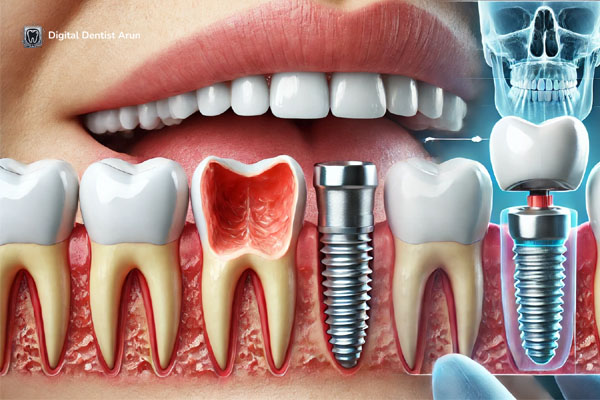Dental implants are an incredible option for restoring missing teeth, offering long-term durability and a natural look. However, many people wonder how long the healing process takes before crowns or caps can be applied. Understanding the typical healing time for dental implants helps set the right expectations and ensures a smooth recovery. Let’s explore the journey from implant surgery to the day your new crowns or caps are placed.
What Is the Healing Time for Dental Implants?
The typical healing time for dental implants can range between three to six months, depending on factors like the health of your jawbone, the complexity of the surgery, and your body’s natural healing abilities. After the implant is placed, it must join with the surrounding bone in a process called osseointegration. This stage is crucial, as it forms the foundation for the crown or cap that will later be attached.
During this period, it’s essential to follow your dentist’s advice and take care of your oral hygiene to avoid complications that could extend the healing time. Your body needs to be in the best possible shape to ensure a solid bond between the implant and your jawbone.

Factors That Affect the Healing Time for Dental Implants
While the typical healing time for dental implants is around three to six months, several factors can influence this timeline:
- Bone Health: If the jawbone is weak or insufficient, a bone graft may be required before the implant is placed. This additional procedure can extend the overall healing time.
- Number of Implants: Multiple implants or complex cases may need a longer healing period compared to single implant placements.
- Smoking and Health Conditions: Smoking, diabetes, and other health issues can slow down healing and impact osseointegration. A healthy lifestyle speeds up recovery.
- Oral Hygiene: Good oral hygiene is vital in preventing infections, which could delay the healing process. Keep the surgical site clean and avoid any rough brushing around the area.
- Location of the Implant: Implants placed in areas with denser bone, like the lower jaw, tend to heal faster than those in the upper jaw.
When Can Crowns or Caps Be Applied?
Once osseointegration is complete, your dentist will assess whether the implant is securely fused to the bone. At this stage, the gum tissue around the implant will also have healed, making it possible to take impressions and create your custom crowns or caps. This is the moment you’ve been waiting for – the final restoration that completes your smile!
Typically, crowns or caps can be applied three to six months after the implant surgery. However, if you’ve had additional procedures like a bone graft, it might take longer. Your dentist will work with you to set a personalized timeline and keep you informed of your progress.
How to Speed Up the Healing Process for Dental Implants
Although the typical healing time for dental implants is determined by your body’s natural processes, there are some steps you can take to ensure a faster and smoother recovery:
- Follow Post-Op Instructions: Carefully follow your dentist’s post-operative care instructions. This includes taking prescribed medications, maintaining a soft food diet, and avoiding strenuous physical activity.
- Quit Smoking: Smoking can interfere with the healing process and increase the risk of implant failure. If you smoke, now might be a great time to quit.
- Eat Nutritious Foods: Proper nutrition plays a vital role in the healing process. Eating foods rich in vitamins and minerals can boost your body’s ability to recover quickly.
- Stay Hydrated: Drink plenty of water to support healing and maintain overall health.
- Maintain Oral Hygiene: Gently clean the implant area, keeping it free of bacteria. Be sure to use any recommended mouthwashes and avoid hard or sticky foods that could damage the implant.
Why Patience Is Key During the Healing Process
While it might be tempting to rush the process and get your new crowns or caps as soon as possible, patience is vital when it comes to dental implants. The typical healing time for dental implants ensures that the foundation is strong enough to support your crowns or caps for many years to come. Trying to apply the crowns prematurely can result in implant failure, which could lead to additional surgeries and extended recovery times.
Final Thoughts on the Typical Healing Time for Dental Implants
The road to a new smile through dental implants requires time, but the end result is well worth the wait. With proper care and by following your dentist’s instructions, you can expect a smooth recovery and the successful placement of your crowns or caps. Remember, every person heals differently, and it’s important to focus on ensuring long-term success rather than speeding up the process.
The typical healing time for dental implants may take a few months, but once your crowns or caps are in place, you’ll have a confident, radiant smile that lasts a lifetime. Stay motivated and trust the process – your new smile is on its way!

